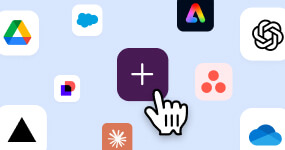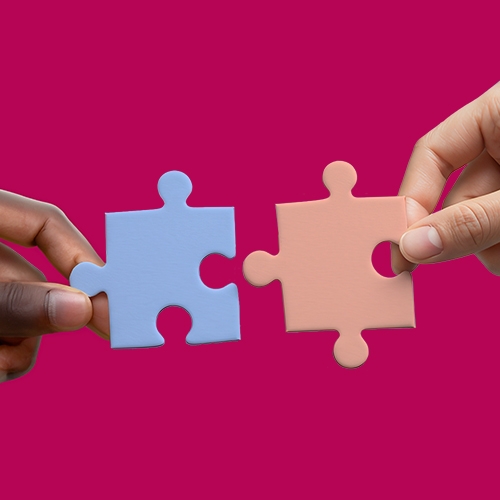Many people use teamwork and collaboration interchangeably, but they’re not quite the same.
Teamwork involves dividing responsibilities and working independently to reach a shared goal. Collaboration is about co-creating and bringing different perspectives together to solve problems and come up with ideas.
Understanding the difference matters. If teams know when to lean on structured teamwork and when to embrace collaboration, projects move more quickly, ideas improve, and outcomes are stronger.
Effective organizations use both, adapting fluidly depending on the task and team needs. Let’s dive deeper into teamwork vs. collaboration.
What’s the difference between teamwork and collaboration?
At first glance, teamwork and collaboration might seem the same, but they have distinct nuances. Here’s a quick definition of each and how they differ:
What is teamwork?
Teamwork is a coordinated effort toward a common goal. Each person has defined responsibilities and contributes their part, often working in parallel with others.
Think of how a team works together on a marketing campaign. One person writes copy, another designs visuals, and a project manager ensures the team meets deadlines. Clear roles keep work organized and make it easier to track accountability.
What is collaboration?
Collaboration is a shared process of creating or problem-solving with equal input from everyone involved. Instead of dividing tasks, participants work together to shape outcomes.
For example, a cross-functional team might brainstorm product features in real time, building on each other’s ideas until the best solution emerges. Collaboration thrives on open dialogue, shared decision-making, and collective ownership of results.
Comparing teamwork and collaboration side by side
The core difference between teamwork vs. collaboration is structure versus flexibility. Teamwork relies on clearly defined roles and processes, while collaboration benefits from fluid contributions and shared ownership.
Both teamwork and collaboration are essential — teams need clear responsibilities as well as the creativity that comes from open collaboration.
This table highlights the key differences between teamwork and collaboration:
| Key element | Teamwork | Collaboration |
| Structure vs. flexibility | Defined roles and responsibilities keep projects organized | Fluid roles allow for idea exchange and joint problem-solving |
| Leadership approach | One leader or manager coordinates efforts | Leadership is distributed, with everyone contributing equally |
| Communication style | Often directive, focused on updates and progress | Interactive and exploratory, focused on dialogue and idea generation |
| Decision-making process | Decisions flow from the leader or set process | Decisions emerge through group consensus or co-creation |
| Output and end goals | Completion of individual tasks that roll up to a final deliverable | Shared solutions or innovations shaped collectively |
By recognizing these distinctions, organizations can choose the right mode of working for each situation — balancing the efficiency of teamwork with the creativity of collaboration.
When to use teamwork
Here are some situations where teamwork delivers better results:
- Clear, time-bound goals. When a project has a fixed deadline, teamwork helps assign responsibilities so tasks are finished on time. For example, a product launch with a set release date requires different team members to complete their separate parts within a strict timeframe.
- Large-scale projects. Complex initiatives often need multiple streams of work to move forward in parallel, with each person owning a specific role. A construction project, for example, relies on engineers, designers, and contractors performing their duties in sync to prevent delays.
- Crisis or urgent situations. In high-pressure moments, structured teamwork ensures everyone knows what to do and can act quickly without confusion. Emergency response teams operate this way, as do IT departments during system outages when speed and precision are crucial.
- Standardized processes. When tasks follow established SOPs, teamwork provides consistency and accountability. In industries such as healthcare or finance, following established procedures safeguards compliance and quality.
When to use collaboration
Here are some situations where collaboration is the better choice:
- Cross-functional projects. When multiple departments need to solve a complex challenge, collaboration brings together different perspectives to find solutions that benefit the entire organization. For example, launching a new customer loyalty program may require input from marketing, IT, customer support, and finance to align strategy, tools, and budget.
- Innovation and brainstorming sessions. Creative breakthroughs emerge from open dialogue, where people build upon each other’s ideas. In practice, this might look like a brainstorming session where a sales team shares customer insights and product designers turn them into new features.
- Problem-solving in uncertain situations: When the path forward isn’t clear, collaboration helps bring out diverse viewpoints. This is especially useful during times of disruption, like supply chain issues, when fresh ideas come from sharing insights.
- Early stage project planning. Team collaboration is valuable when shaping the scope, direction, and priorities of a new initiative. Co-creating early plans ensures alignment among stakeholders before execution begins.
- Working together, separately. Collaboration doesn’t have to mean everyone being in the same room at the same time. With async collaboration strategies, teams can share documents, leave feedback in Slack channels, or capture ideas in canvases. That way, colleagues with different productivity schedules or living in different time zones can still work together seamlessly.
Skills that enhance both teamwork and collaboration
Certain skills make people more effective, regardless of the mode they’re working in. Here are five that stand out:
- Communication. Strong teamwork and collaboration depend on active listening, clear expression, and the ability to adapt your message to different audiences.
- Emotional intelligence. Empathy, conflict resolution, and trust-building help teams navigate challenges effectively and maintain healthy relationships.
- Technical proficiency: Comfort with the best collaboration tools for communication, shared documents for co-editing, and project management software for tracking progress keeps teams running smoothly.
- Adaptability. The ability to adjust quickly to shifting goals, priorities, or workflows allows teams to stay effective in both structured and creative settings.
- Accountability. Taking ownership of your role and following through builds reliability, which is essential whether responsibilities are clearly divided or shared equally.
Real-world examples of teamwork and collaboration
The best way to understand the difference between teamwork and collaboration is with real-world examples, like the following:
Collaboration example
Imagine a marketing and product team co-creating a launch campaign for a new app feature. The product team brings deep knowledge of functionality while marketing knows how to position benefits for customers. Instead of working separately, they hold joint workshops, share live documents, and meet on video calls to refine messaging together. The outcome is a polished campaign and a unified story that reflects both technical accuracy and customer appeal.
Teamwork example
Teamwork in a hybrid workplace is critical when customer support teams face a surge in inquiries after a product update. Some reps work from the office while others log in remotely, but each is responsible for a part of the queue. A lead monitors volume, escalates issues, and posts updates in a shared Slack channel. With clear roles and open communication, the team can coordinate across locations, avoid duplication, and resolve hundreds of cases quickly.
How Slack supports both collaboration and teamwork
Slack supports organizations in both teamwork and collaboration, depending on the situation. Here are three specific ways Slack enhances your team’s efforts:
Real-time messaging for teamwork
Slack’s messaging keeps everyone aligned with instant updates, status checks, and quick coordination. For example, a support team can use a dedicated channel to share case updates and flag urgent issues, ensuring no one works in isolation. Agentforce, which offers AI agents that learn as they help you perform tasks using natural language requests, can surface patterns in these conversations, highlighting recurring issues or automating routine updates so teams can focus on resolution.
Channels and huddles for collaboration
When it’s time to brainstorm or solve problems together, Slack channels and huddles provide space for real-time input. Teams can share files, react to ideas, and build on contributions across departments. With AI assistance, discussions stay focused as insights and key takeaways are automatically captured, reducing the risk of losing good ideas.
Integrations for workflow efficiency
Slack integrates with project management and task-tracking tools, reducing friction between communication and execution. Whether it’s pulling in Jira tickets, syncing Salesforce updates, or sharing Google Docs, integrations keep everything organized in one place. By connecting people, processes, and data, Slack makes both teamwork and collaboration more effective.
Finding the right mode at the right time
Teamwork and collaboration are complementary approaches that support different types of work.
Teamwork provides the structure needed to meet deadlines, scale large projects, and maintain consistency. Collaboration, on the other hand, fuels creativity, reveals diverse perspectives, and helps teams navigate uncertainty.
Knowing when to lean on teamwork and when to embrace collaboration can make organizations more productive and adaptable. With teamwork and collaboration tools like Slack, teams can move fluidly between structured execution and open co-creation. This balance helps organizations achieve better outcomes across all areas of the business.






